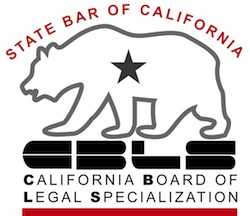Decisions, decisions.
Are you going to reaffirm the car loan?
Your bankruptcy filing requires that you state your intentions about reaffirmation right up front.
Translated, that means what are you going to do about the car after bankruptcy. The car on which you still owe money and need to get to work.
In the midst of all the other information needed to file a Chapter 7, it’s hard to get your head around reaffirmation.
Particularly since reaffirmation got a lot more complicated and unpredictable thanks to Congress and bankruptcy “reform” in 2005.
With my apologies for being dull and dense, here’s my attempt at explaining the issues and the options when deciding whether to reaffirm a car loan.
Liens not discharged
The entire reaffirmation issue comes up because the bankruptcy discharge wipes out your personal liability for your car loan. But the lender’s lien on the car survives bankruptcy.
After your Chapter 7 is over, the car lender can’t sue you for the unpaid balance of the car loan, but it can repo the car to enforce its lien.
As bankruptcy lawyers say, the lien “rides through” the bankruptcy.
If you keep paying
Before 2005, a provision of the Bankruptcy Code said that if you kept payments current on a loan after filing, you were not in default.
New California law restores “pay and drive”.
Put another way, just filing bankruptcy and discharging your personal liability didn’t breach the contract for the car loan as long as you paid as agreed.
That provision was wiped out in bankruptcy “reform”. Now, even if you are current on the car loan payments, just having filed bankruptcy puts you in default. You are now at risk of having your car repossessed.
You can eliminate the risk of repossession by reaffirming the car loan.
Effect of reaffirmation
If you “reaffirm” the original loan deal, your bankruptcy is no longer a breach of the contract. You give up the benefits of your bankruptcy discharge as to the car loan. So, the car lender emerges from your bankruptcy in the same position that it was when you filed.
You, however, are once again at risk of not only repossession of the car, but also a lawsuit for any deficiency if you can’t pay in the future.
The greater the spread between what you owe on the car and what it’s worth, the greater the risk to your pocketbook in the future.
What the car lenders got from Congress
The car finance industry was one of the big winners when Congress amended the Bankruptcy Code. They got the right to intimidate debtors with the loss of their wheels if they didn’t give up the benefits of bankruptcy as to this one creditor.
And the fear factor of losing your car, even if you’re paying, is huge.
As it has played out since 2005, most car lenders have elected not to automatically repossess cars when the loan isn’t reaffirmed. They decided that they’d rather have the stream of income that post bankruptcy payments provide than get the used car worth less than the loan balance.
Ford Motors is the exception. Ford has aggressively repoed cars where the debtor didn’t reaffirm the debt.
Reaffirmation in bankruptcy is voluntary
You get a choice about reaffirming a car loan. You don’t have to reaffirm.
In fact, the form that you file with your bankruptcy papers allows you to elect to surrender the car.
Surrender may be the best thing if the car is simply too expensive or isn’t reliable.
You can choose to keep the car and continue paying without reaffirming. You take your chances that the lender will repossess the car, but you also keep the benefits of the bankruptcy discharge.
Getting reaff approved
Because reaffirmation presents risks, the required form for reaffirming lays out the value of the collateral, the amount owed on the loan, and the interest rate. The facts get laid out in black and white.
A form I reviewed recently made clear that while the debt to be reaffirmed was $22,000, the value of the car involved was only $11,000. You had to ask whether it was a good deal to pay $22,000 for something worth half of that.
Sometimes, the lender will reduce the interest rate or extend the payments as part of the reaffirmation.
The form also calls for the debtor to lay out his income and his other expenses. The question is: can the debtor really afford to keep paying on the car.
Often, there isn’t enough income to pay the expected costs of living and pay the car. The form contains no way to express the fact that some living expenses are essential, and get paid even if other expenses are deferred.
Because the issue is so fraught with risks and uncertainties, the reaffirmation agreement has to be approved by the bankruptcy judge.
The judge is tasked with assessing whether the debtor understands the risks, and can pay the reaffirmed loan without hardship.
And the question the law doesn’t address is what can the debtor do if he loses the car.
In my experience, lawyers hate having to advise clients about their “options” when the options are so unappealing. Judges, too, hate trying to predict the debtor’s future, with or without the car.
Does ride-through survive?
Out of this cauldron of uncertain and bad options, a line of court decisions has developed that may provide a middle course.
Some courts have held that a debtor who attempts to reaffirm a car loan and has the judge deny approval is still protected from repossession.
Those courts read the law to say that all that is required to preserve the right to “keep and pay” is the willingness to reaffirm. So, even if the judge withholds approval of the reaff, the lender can’t repossess as long as the payments are kept current.
In my view, all of this is enough to end our love affair with cars. But there are your choices.
More
Reaffirmation and your credit score
What a bankruptcy judge actually does
To Do list for after your discharge






